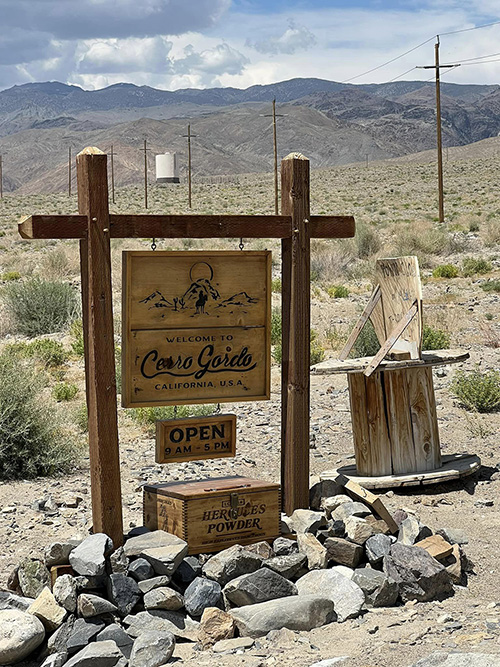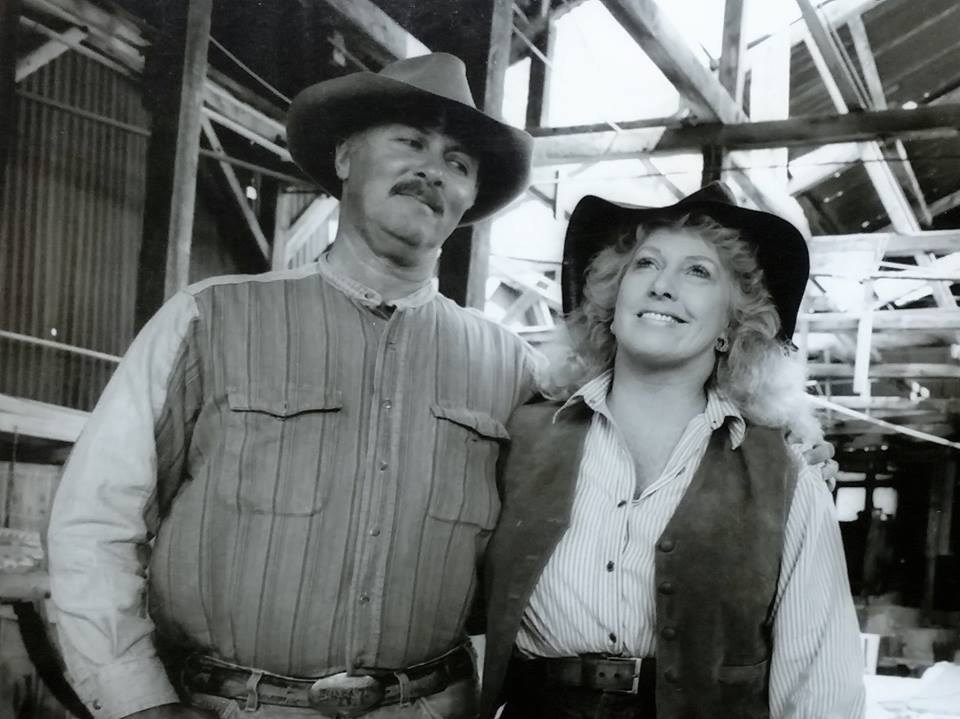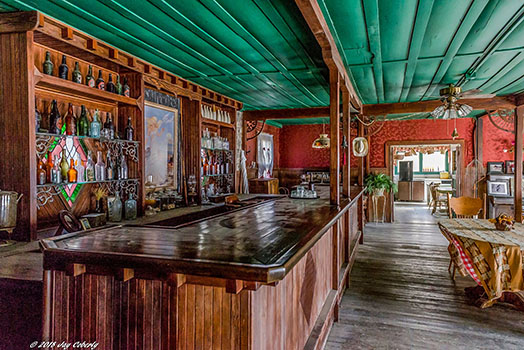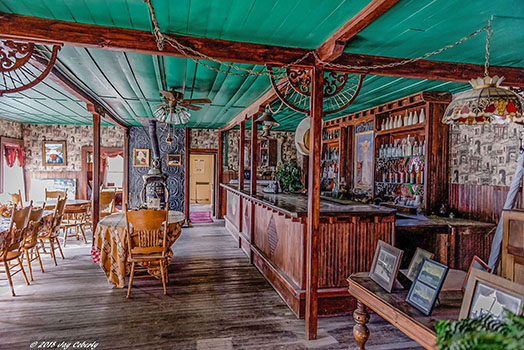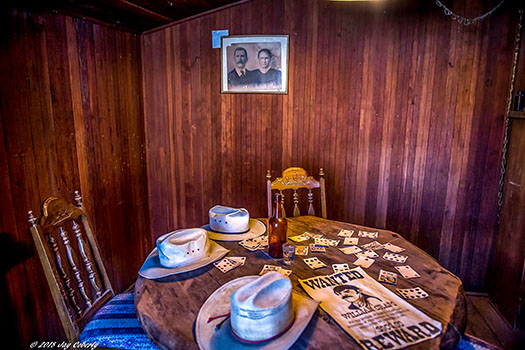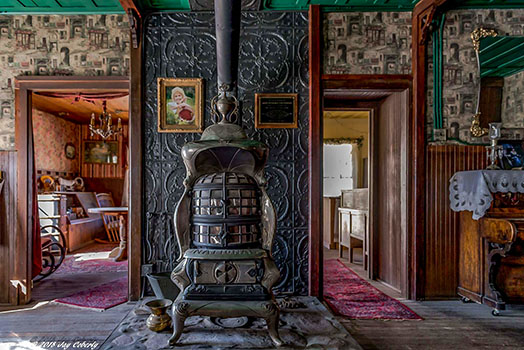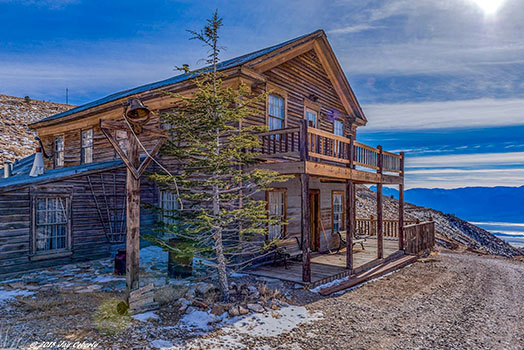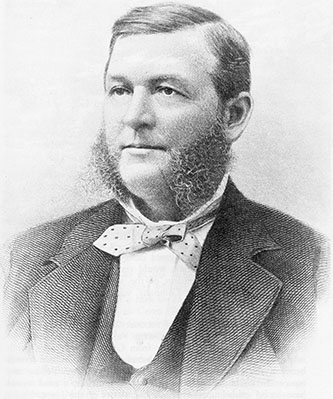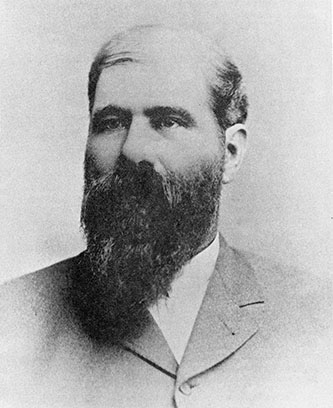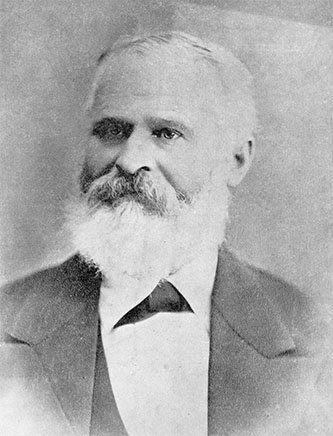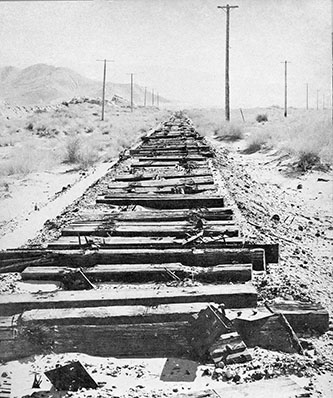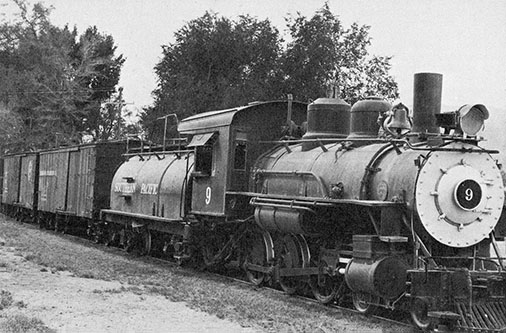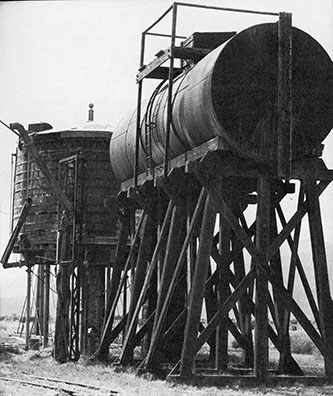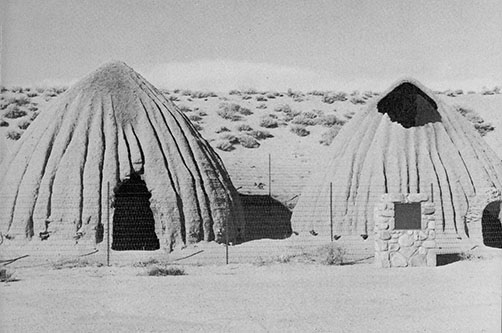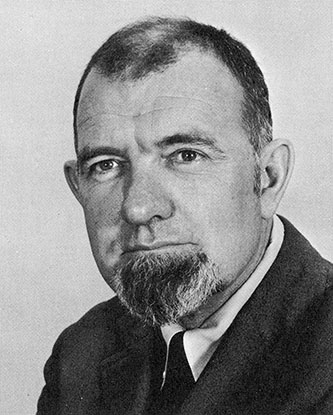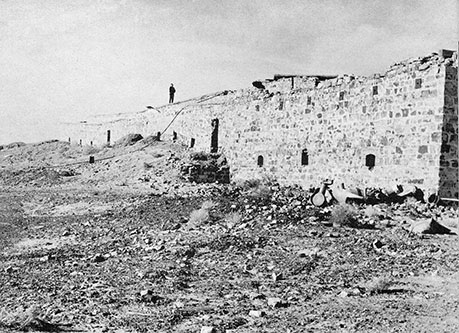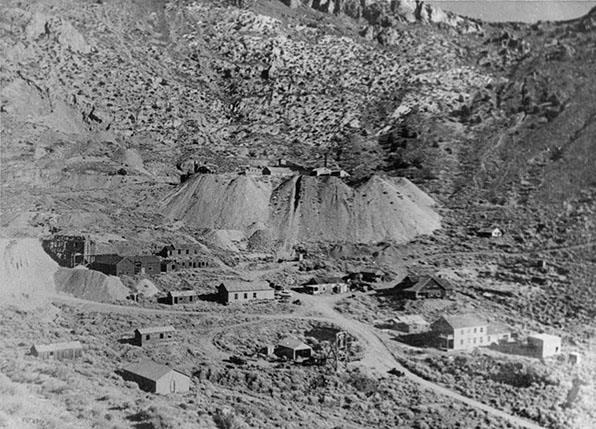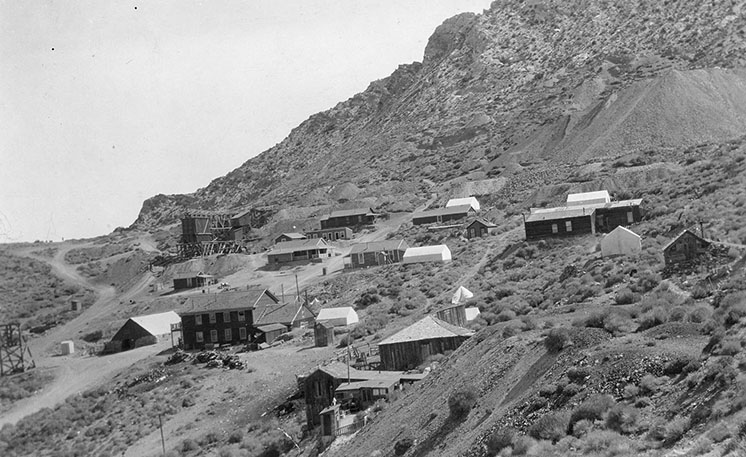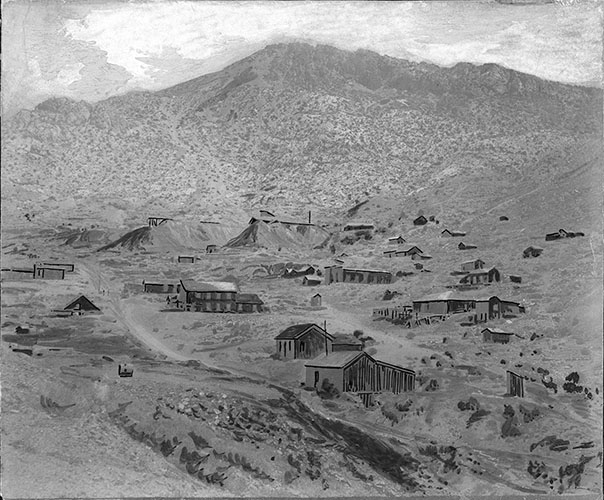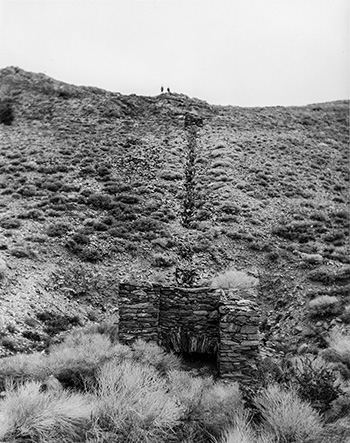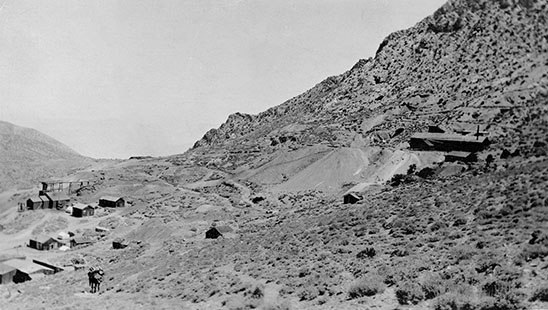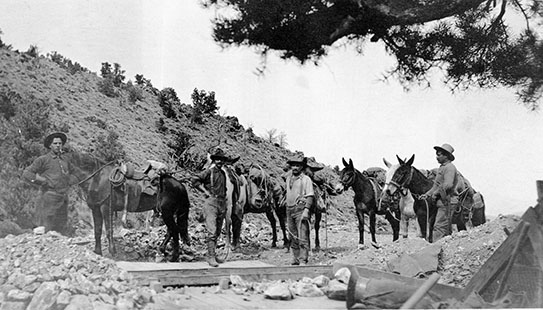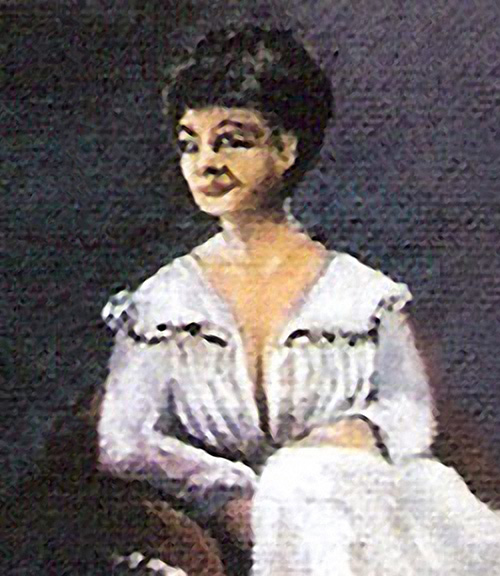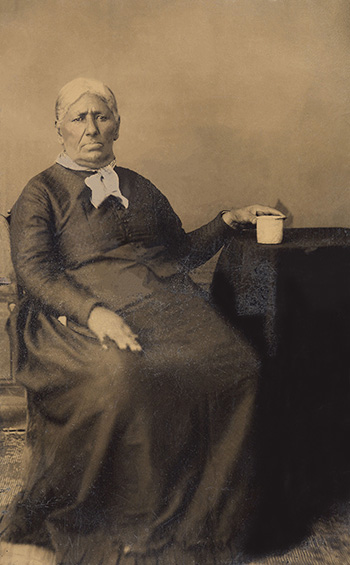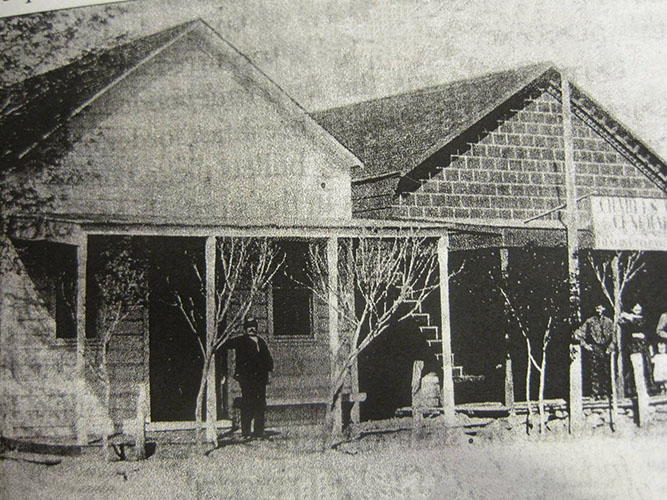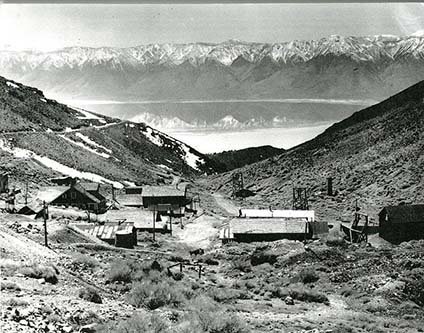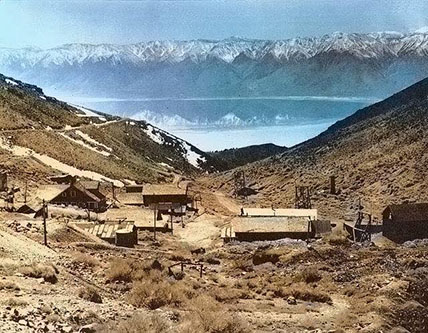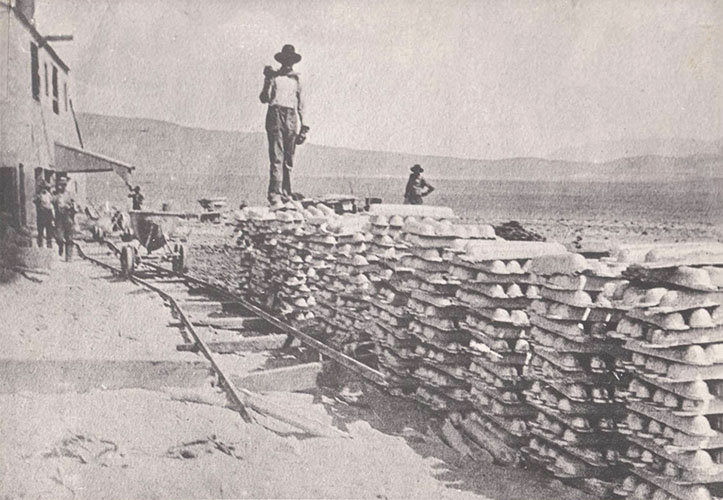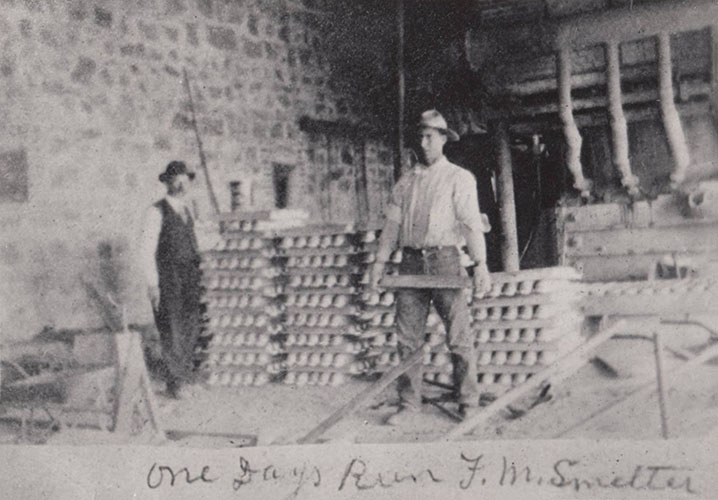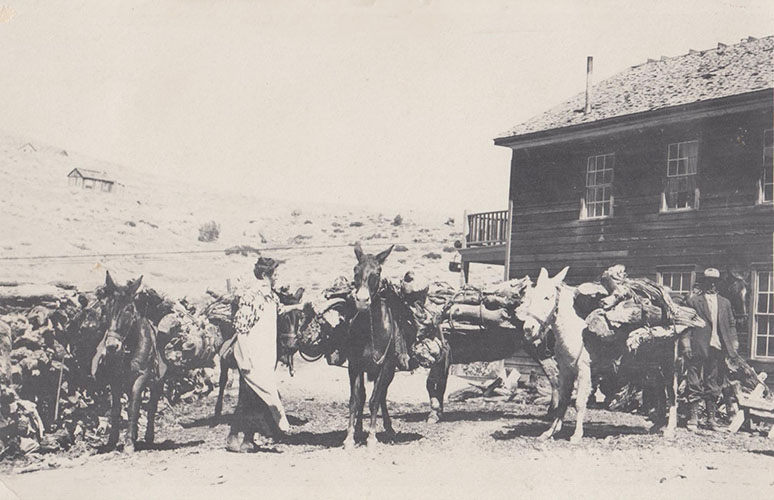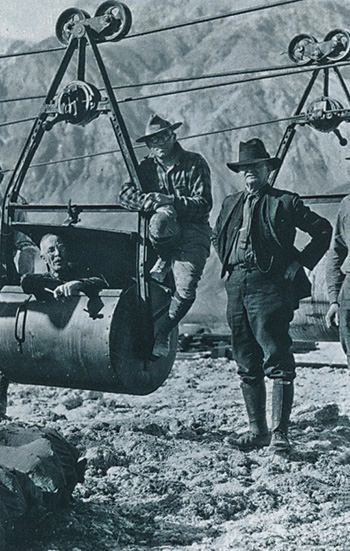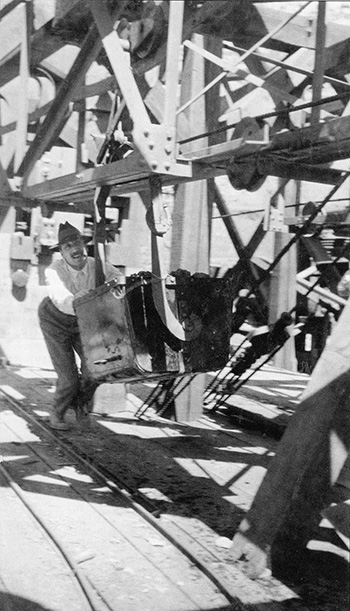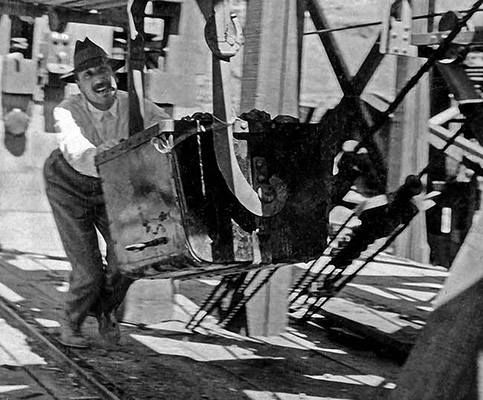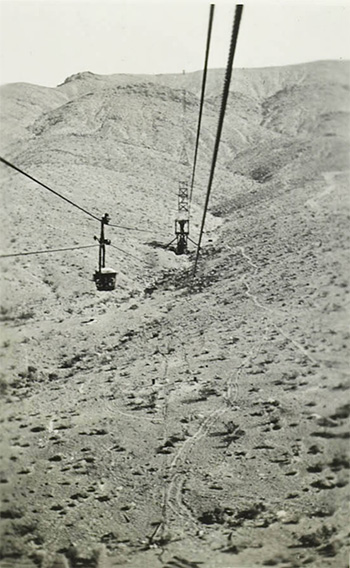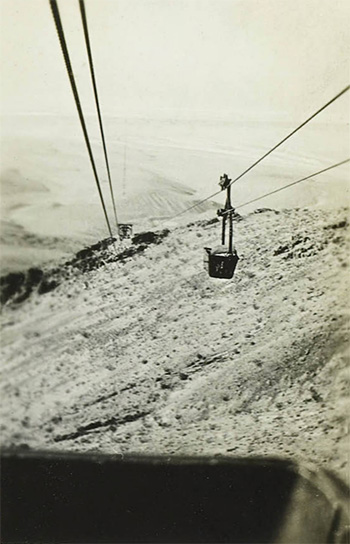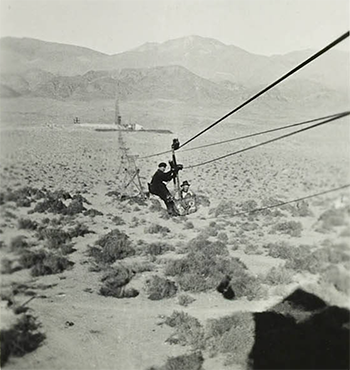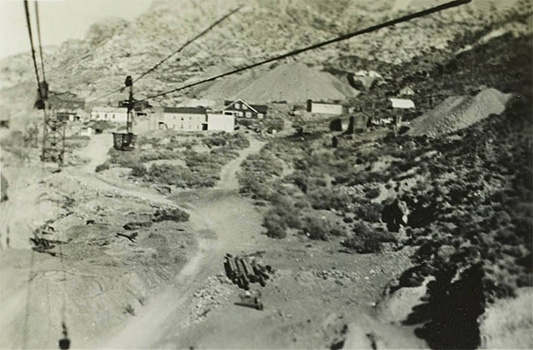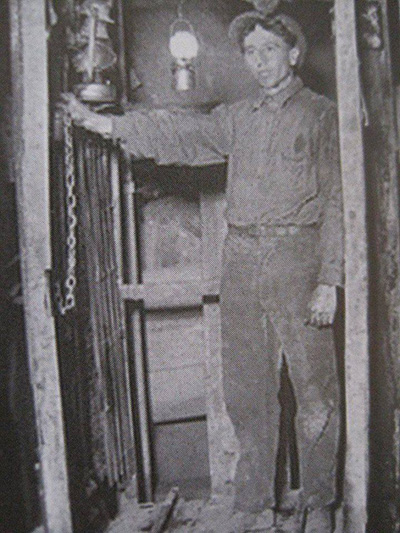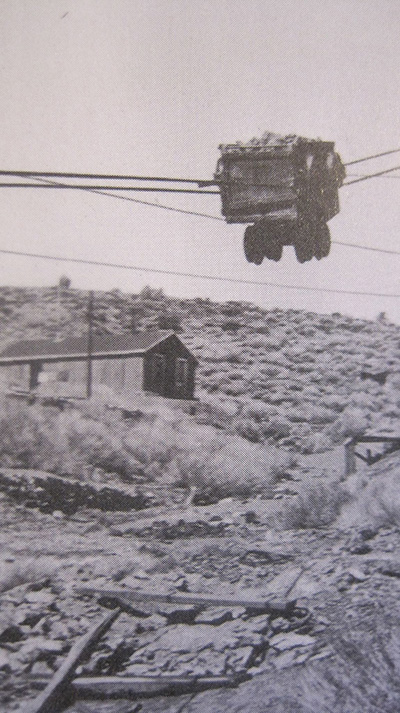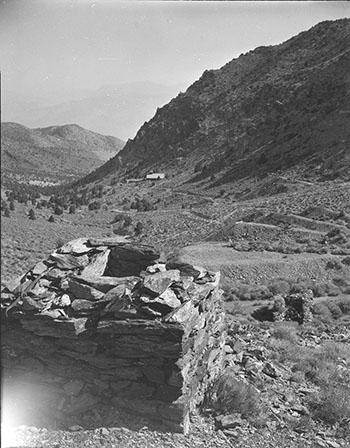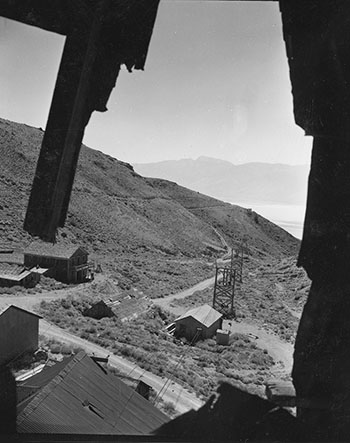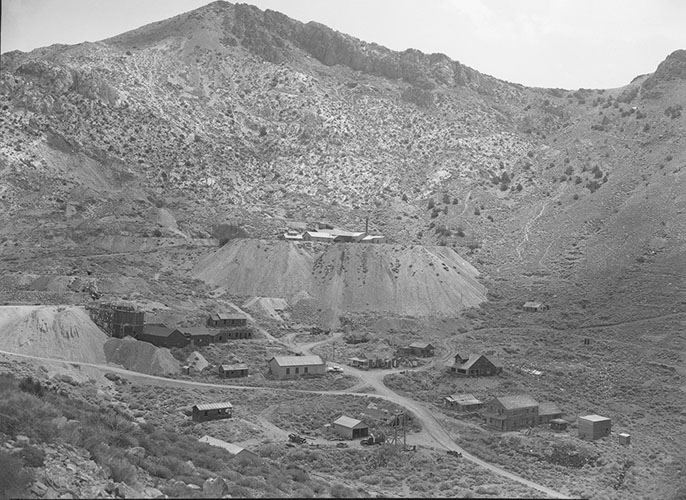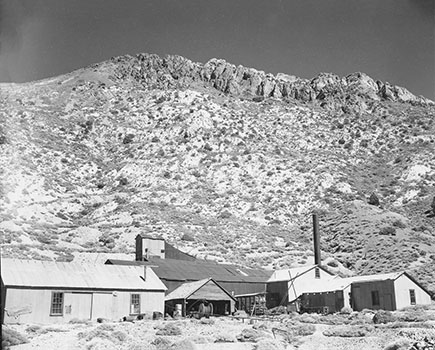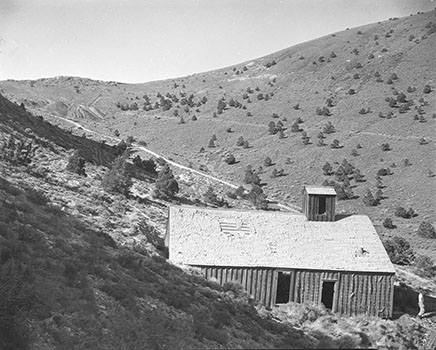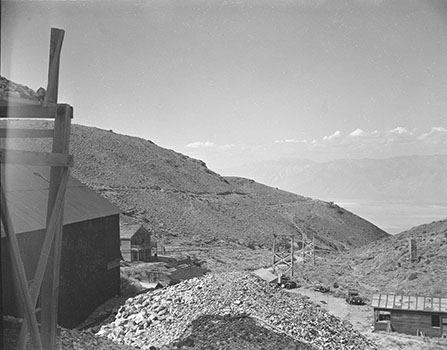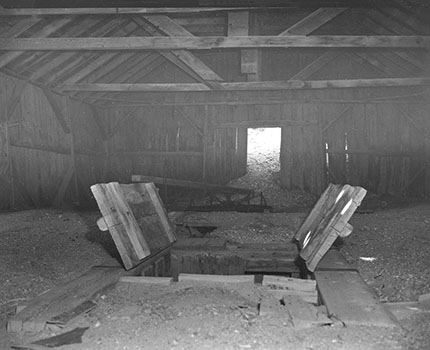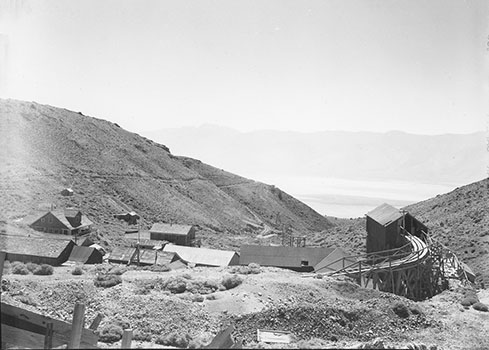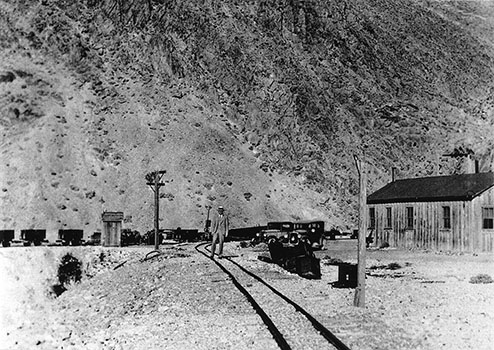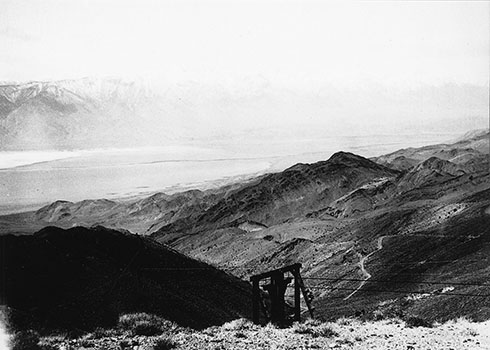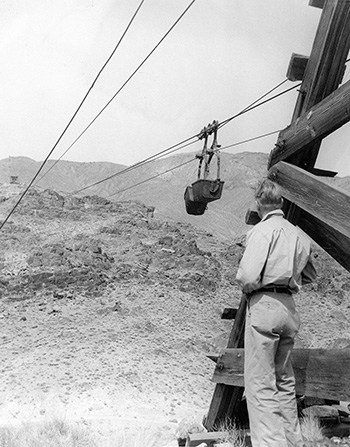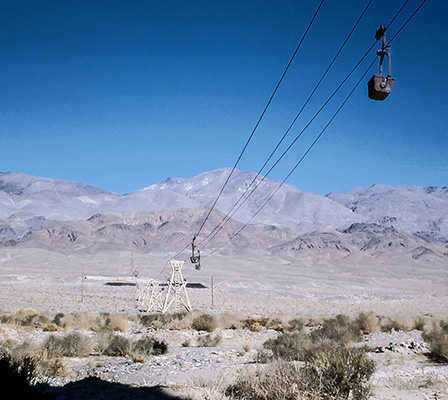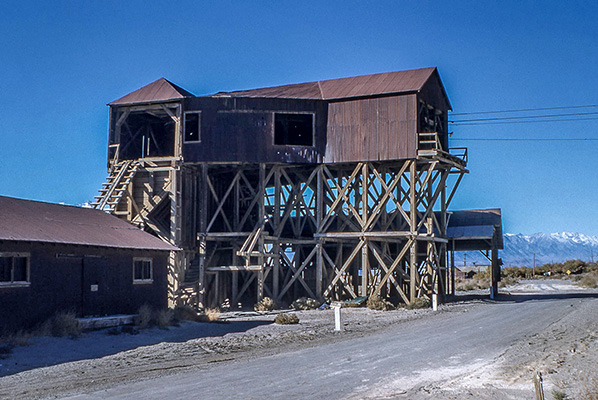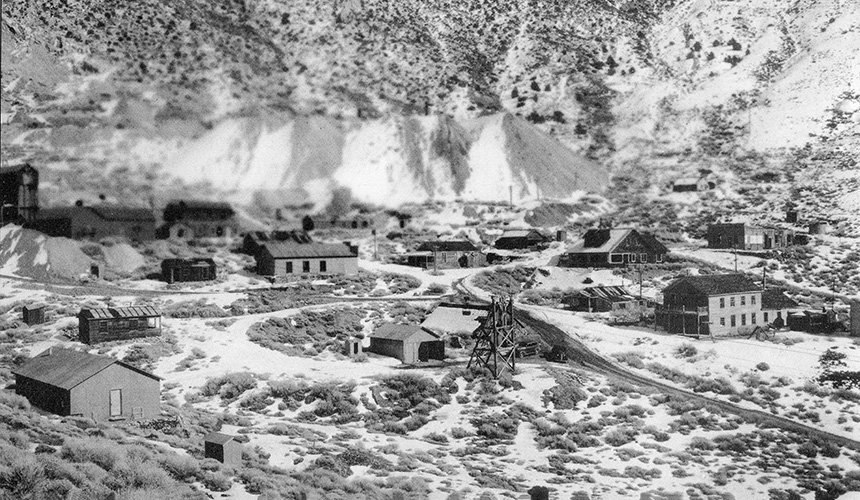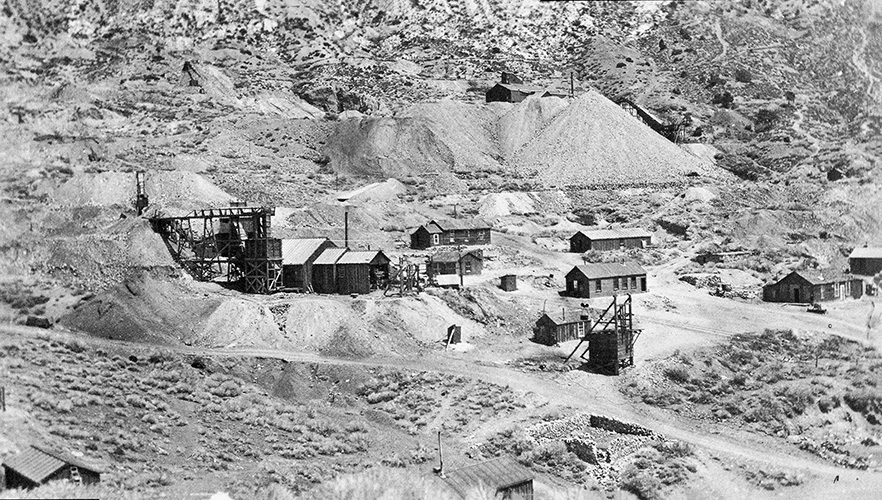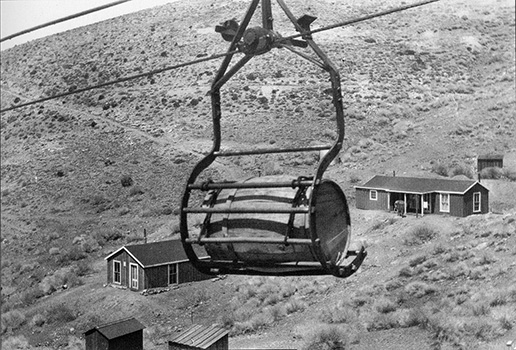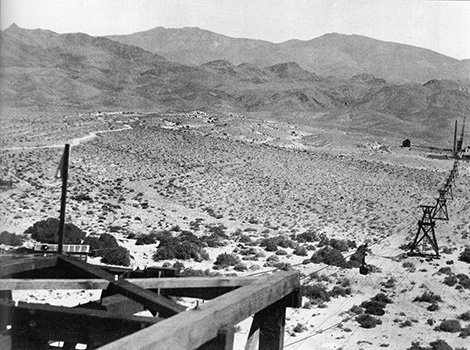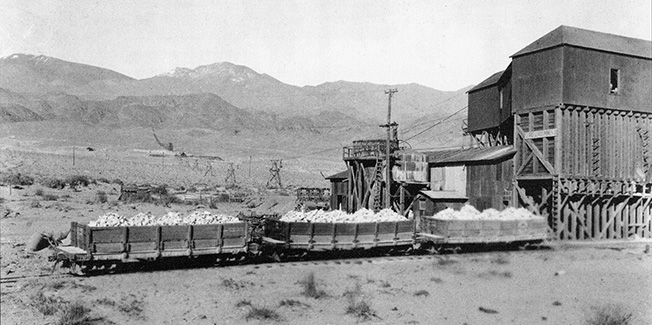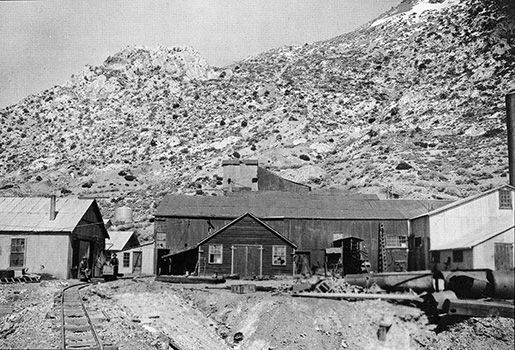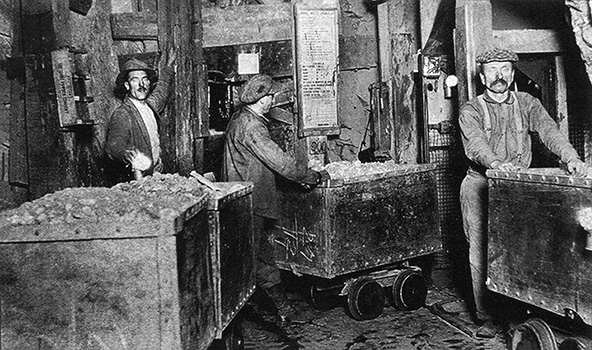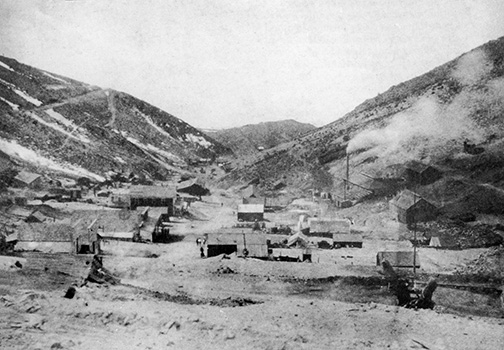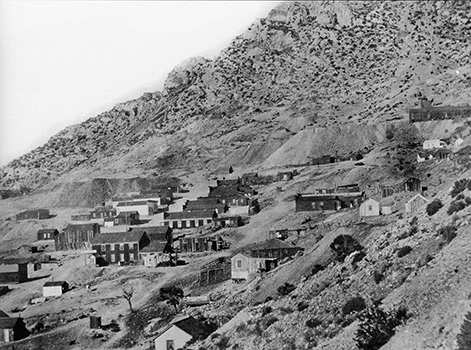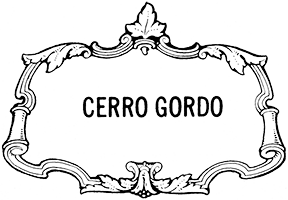





























































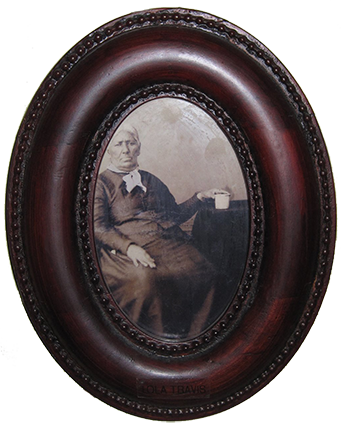
|
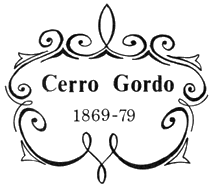 "Fat Hill"  |
See USE NOTICE on Home Page |
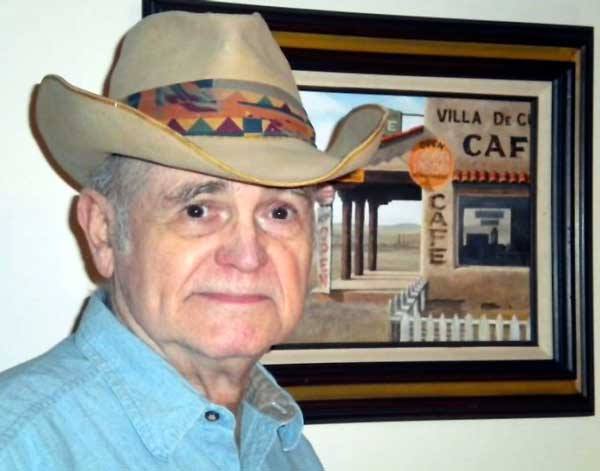
Bob Likes |
Pictures
and text excerpts are all from "From this Mountain - Cerro Gordo" by Robert C. Likes and Glenn R. Day (1975) unless otherwise indicated. |

A Voice From the Border
(A San Francisco Daily Examiner article - August 8th, 1871)
Article by DEMOCRAT
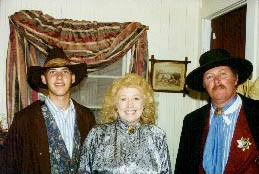 Shawn, Jody, and Mike Patterson Mike Patterson - 1947 - 2009 Jodi Stewart - 1944 -2001 |
|

California Ghost Town with Blood Past Suffers New Calamity
Article by Louis Sahagun
California Ghost Town Sells for $1.4M;
Buyers Plan to Develop it as a Tourist Attraction
Article by Jack Flemming

Man Trapped for Six Months in Abandoned US Ghost Town
Article by 9News Staff
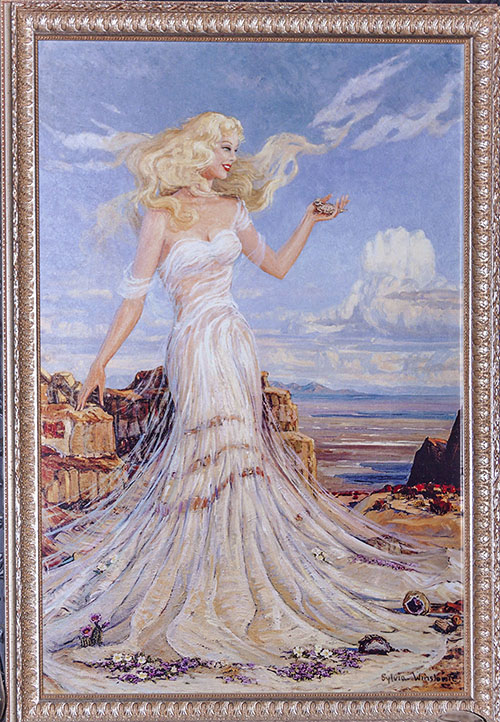 Painting over the bar in the American Hotel made by Sylvia Winslow featuring her daughter Susan. Sylvia originally painted her daughter in the nude and subsequently added the dress. Born in Ireland on June 8, 1910. Sylvia moved to southern California in 1928 and settled on a 640-acre ranch with her cowboy-husband, Slim Winslow. A self-taught artist, her forte was landscapes of the Mojave desert. After Slim's death in 1973 she ceased painting. In 1990 she wed Phillip Kirby and lived in Kern County until her demise on Feb. 15, 1996. Member: Artists of the Southwest. Exh: Gardena High School, 1945; Desert Magazine Bldg (Palm Desert), 1949; Chamber of Commerce (Santa Paula), 1953. (Photo courtesy of Ray DeLea) "Artist of the Mojave - Sylvia Winslow" by Harold O. Weight |
|
Mortimer Belshaw Biography
(Courtesy of "Friends of Cerro Gordo")
Early Cerro Gordo History
|
"From this Mountain - Cerro Gordo" by Robert C. Likes and Glenn R. Day |
"Into Southern Inyo County"
by Russ Leadabrand
|
The Timber Baron |
The Town Baron |
The Legal Baron |
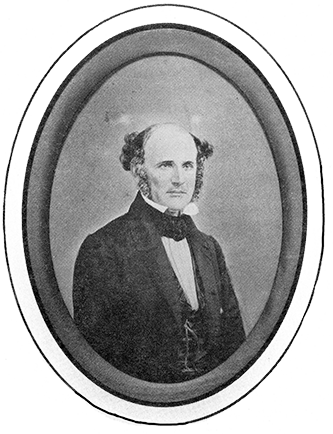 Colonel Sherman Stevens He founded the Inyo Lumber & Coal Company and fueled the furnaces of Cerro Gordo with charcoal produced from his sawmill at Cottonwood Canyon in the Sierra Nevada. |
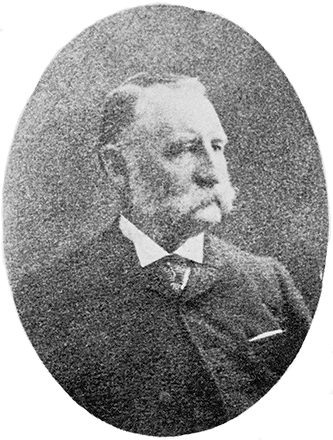 Julius Keeler Was the architect of the town of Keeler and reactivated the Union Consolidated Mines and Col. Stevens' lumber operation |
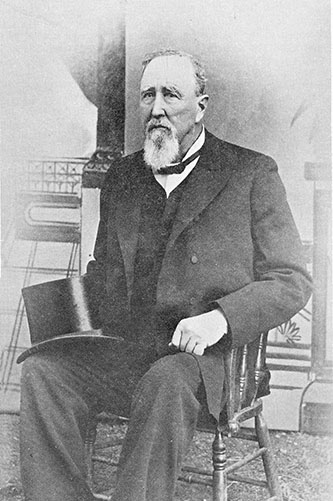 John Hannah Inyo County's first judge, brought law and order to the lawless streets of Cerro Gordo where a murder a day was not uncommon. |
The Bonanza Era
|
With two daily stages from Owens Valley serving the camp, Cerro Gordo was well established as a mining town by 1871. The main street was being lined with buildings as fast as the lumber could be obtained. The two-story American Hotel was completed that year, as were several other permanent structures. High false fronted general stores, restaurants, and saloons soon replaced the canvas shacks scattered throughout town. just over the divide, at the head of San Lucas Canyon, small clusters of stone and canvas dwellings were strung down the canyon floor. The predominant structure was the large shafthouse covering the 300 foot vertical shaft of the Newtown mine. Either side of the canyon was covered with prospect holes and miners' shanties. "From this Mountain - Cerro Gordo" by Robert C. Likes and Glenn R. Day |
"Sherman Stevens' Timber Empire"
by Oscar Lewis
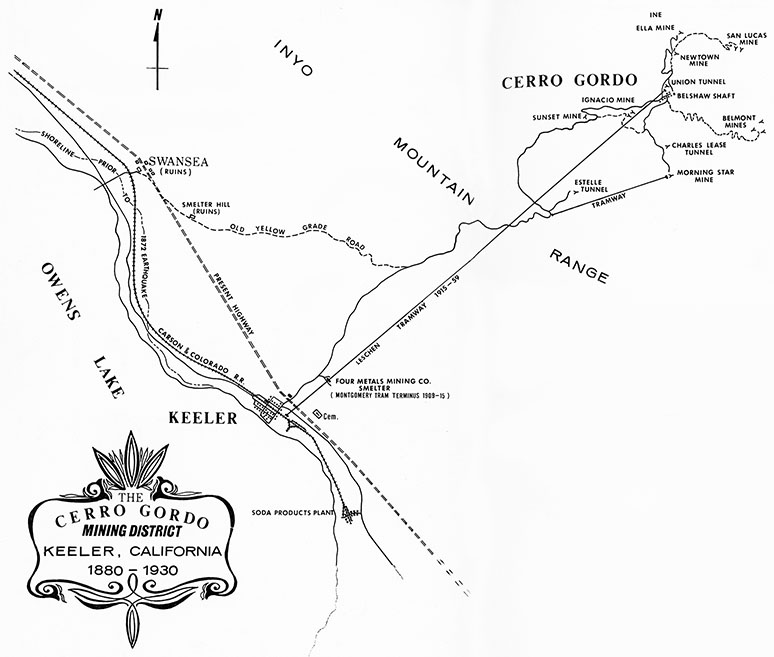
Cerro Gordo Mining District
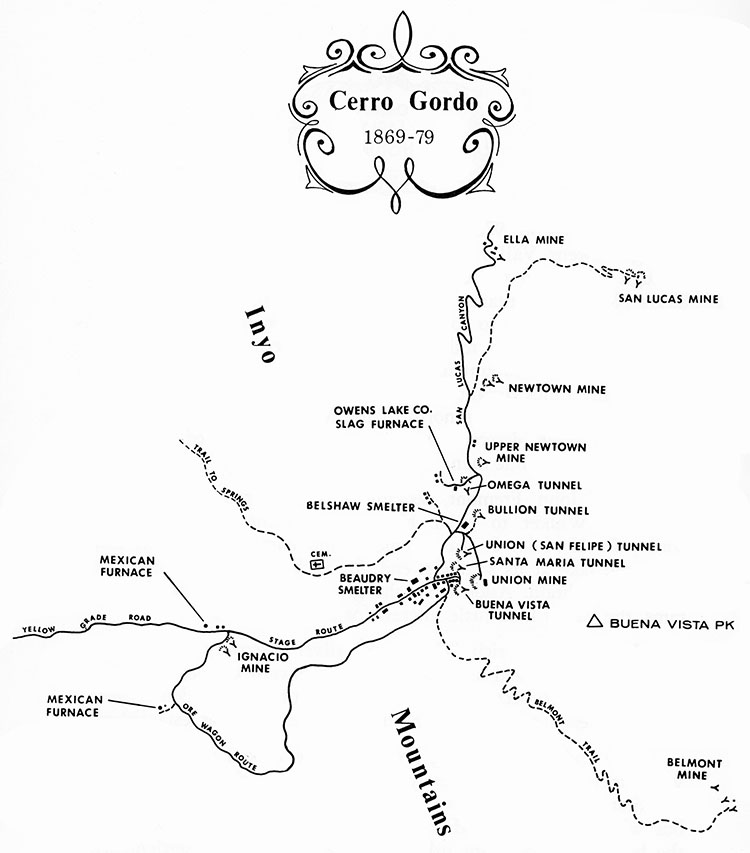
Cerro Gordo - 1869-1879
Cerro Gordo Mining in the 1900s
by Friends of Cerro Gordo
The First White Bride of Cerro Gordo
by Friends of Cerro Gordo
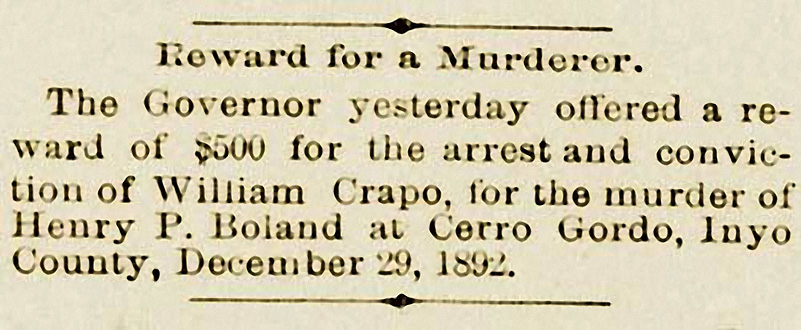
Growing Up on the Old "Fat Hill"
Friends of Cerro Gordo
Hauling It In & auling It Out: Anecdotes of the Old Time Packers
by Friends of Cerro Gordo
Cerro Gordo's infamous Lola Travis was well known for her shrewd business sense, and her Dance Hall and Palace of Pleasure where the lonely miner's needs were taken care of. She made the headlines often and was noted as a beautiful woman, who wore the finest fashions of the day. There were no pictures of her, until Robin Flinchum started digging into her history. Robin found living relatives who had this picture of Lola as an elderly woman leading a respectable life in Bakersfield. This is the only known picture of her. She owned the "Palace of Pleasure" on the top of the hill and her competitor, Maggie Moore, owned the "Waterfall" at the bottom of town. Both women's establishbents were often the subject of the headlines of the day as is in evidence in this piece (below) by Remi Nadeau: |
Altogether, Cerro Gordo produced $2,000,000 for the bullion kings in 1874 alone. Though his opponents apparently held the high cards in the grim game they were playing, Belshaw was in fact reaching into the earth and making off with the stakes. Always sociable and hearty in spite of his callous business methods, Belshaw now found himself entertaining more often at his hillside house, making more frequent trips "below" to see his wife in San Francisco. In spite of the San Felipe lawsuit still hanging over their heads, lie and Beaudry felt confident enough to join the Los Angeles city-makers in projecting a railroad across the desert to haul Cerro Gordo's expanding output. As for the camp itself, the surge of production was bringing new buildings to her streets, new population to her hillsides. The Union Hotel was erected to compete with the two-story American House which John Simpson had erected in 1871, and the thousand persons who had previously remained on Buena Vista's slopes only during winter snows now found full employment the year round. But matching the heavier flow of silver down the Yellow Grade was a new stream of gold coins across Cerro Gordo's counters, a fact which inevitably brought a return of the lawless element. Shootings became so frequent that scarcely a month passed without another affray. Though the situation held little interest for Belshaw and Beaudry, their enterprise had in fact spawned a wild town which lived by the revolver. As the Inyo Independent commented, "A good calaboose or a little judicious hanging is much needed upon Cerro Gordo hill." One of the bloodiest outbursts occurred one night early in February 1873, when two Americans were desperately wounded in Maggie Moore's dance hall at the lower end of town. A few minutes later shots ran- out from the camp's upper end, and a Mexican was carried out of Lola Travis's house with a ball in his stomach. Guns barked again the next night, and two antagonists fell wounded in air exchange of shots. "Cerro Gordo is a prolific source of the 'mail for breakfast' order of items," observed the Independent. When the grand jury convened in March, County judge John A. Hannah, dean of the Inyo bench, reviewed the unpunished reign of crime in Cerro Gordo. He launched a bitter tirade against "these lawless ruffians who with murder in their hearts and the implements of death strapped upon their persons, congregate in public places, ever ready to discharge their death-dealing weapons upon the unoffending and unarmed citizens." Following this outburst a trucelike quiet settled over the front for a few months. But by mid-October the Independent was again laconically remarking: "Our local shooting item for the current week reaches us from Cerro Gordo," and then detailing another fatal affray. On November 6. at Maggie Moore's house, two men fell dead before another burst of gunfire. "This makes five men shot, four killed outright, in this county in as many weeks," observed the newspaper. When word came of another affray in Cerro Gordo in the middle of the month, editor P. A. Chalfant had to change the score to seven men in seven weeks. "Pistols continue to crack and good men go down before them," moaned. |
Incidents of Frontier Life - The Fenian of Cerro Gordo
by Samuel D. Woods
|
|
|
Will Change Smelter Base
(From the November 5, 1906 edition of the Tonopah Daily Bonanza)
Barbara Smith Painting of Cerro Gordo (Photo and text courtesy of Friends of Cerro Gordo) |
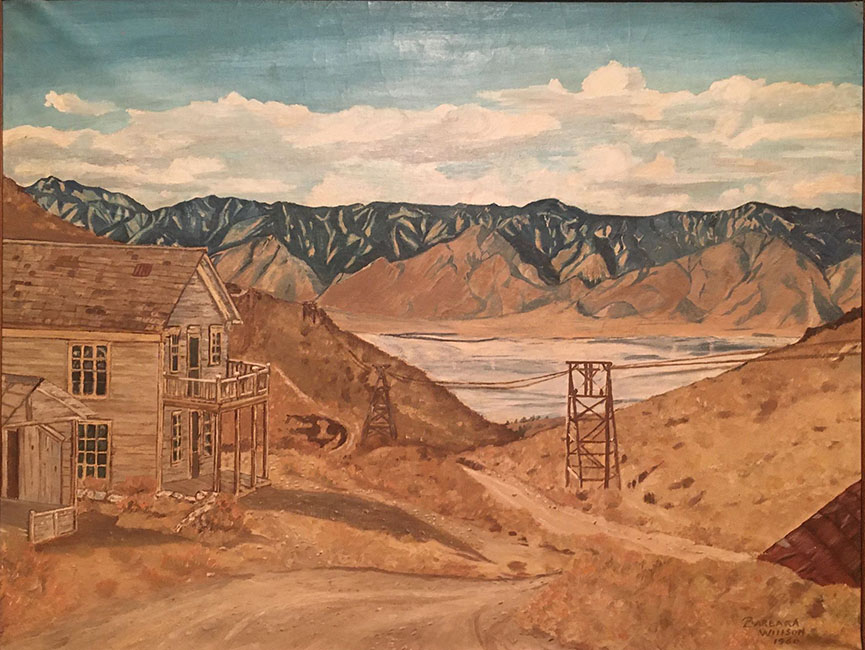 In 1948, a woman named Barbara got into her new Chevrolet, still heated from a fight with her assistant director husband. Barbara was a script girl for RKO movie studios but had roots in Owens Valley. She found herself headed from the Lone Pine area over to Lee Flat just over the saddle from the faded ghost of Cerro Gordo, on the Death Valley side of the Inyo Mountains. It was a very dark and very remote, and she wasn't sure where she was. She waited until morning and found a ramshackle cow camp. Rough and tumble Wally Wilson opened the door when she knocked, and they fell in love immediately. Barbara divorced her Hollywood husband and moved to the cow camp with Wally. In 1949 he was approached by the last owners of the mining camp of Cerro Gordo. Wally and Barbara found themselves caretaker, then owners, when W.C. Riggs had to declare bankruptcy and ownership was granted for $10,500 in back wages. Wally eventually died and Barbara went down to Lone Pine and met Fred Coman. She and Fred lived on the mountain for eight years, until he passed. On another trek to Lone Pine following Coman's death, she met Jack Smith. Jack Smith was Jody Stewart's uncle. Jody came up in 1973 and helped them through the financial difficulties of keeping up Cerro Gordo. She helped them through a few more times over the years until she eventually obtained full ownership of the ghost town in 1984. Thanks to living relatives of Jody Stewart and Jack Smith, we have this wonderful painting of Barbara's. |
Cerro Gordo Photos Courtesy of Rich McCutchan |
|
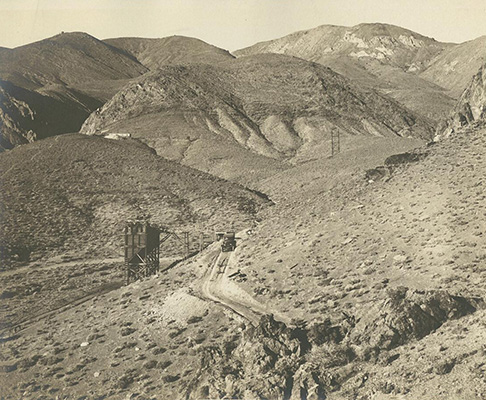 General view of the property of the Estelle Mines Corporation Cerro Gordo mining district. Showing portion of the main tunnel camp, aerial tramway, Morning Star Gold Mine and outcrop of the San Felipe vein on the crest of the mountain. circa 1900 (Photo courtesy of USC Digital Library) |
|
|
|
One Packer's High Sierra Experience | |
|
|
Brochures of the Eastern High Sierra | |
|
More, Cerro Gordo |
|
|
|
Early Big Pine |
|
|
|
Early Bishop Pioneers |
|
|
|
Mary Austin |
|
|
|
Carson and Colorado Railroad |
|
Sign Guestbook View Old Guest Book Entries Oct 1999 - Feb 2015 (MS Word) |
 CONTACT the Pigmy Packer |
View Guestbook View Old Guest Book Entries Oct 1999 - Feb 2015 (PDF) |
